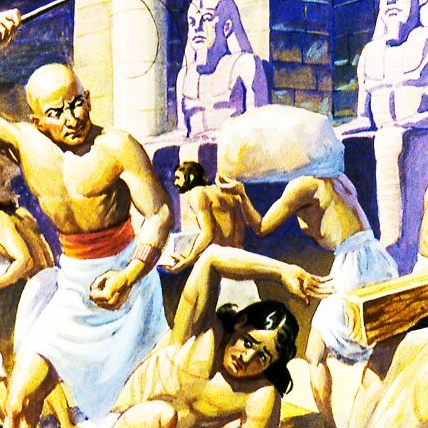click to dowload our latest edition
CLICK HERE TO SUBSCRIBE TO OUR NEWSLETTER


Published
6 years agoon
By
adminTALI FEINBERG
As explained by US-based Rabbi Daniel Brenner, this is the time that we mark the suffering of the Egyptians, both during the 10 plagues and the drowning in the Red Sea, which shows that we do not rejoice at the suffering and deaths of others: “During the Seder there is a tradition to express sadness at the demise of the Egyptians. The joy of the celebration is diminished at every Seder by recalling the impact of each plague on ordinary Egyptians,” he writes. “As every plague is read, a drop of wine is removed from the cup, and at the mention of the final plague – the death of the Egyptian firstborn – our joy is diminished doubly as we remove two drops of wine from our cups.”
Furthermore, the Midrash tells us that as the Egyptians were meeting their horrible end in the churning waters of the Sea of Reeds (Red Sea), the angels wished to sing out praises. G-d rebuked them and said: “My creations are drowning in the sea, and you wish to sing praises?!” (Talmud Megillah 10b). The custom of spilling the wine, explained the Abrabanel, a famous medieval Spanish commentator, stems from the idea that one should not rejoice when an enemy falls, because they are creations of G-d.
Aryeh Cohen, professor of Rabbinic Literature at American Jewish University in Los Angeles, makes this point: “We read that G-d personally destroyed the Egyptians without outside aid – angel or human. Why didn’t G-d empower the Israelites to wreak vengeance on their enemies, who were evil people? Because G-d did not want Israel to witness the violence inflicted on the Egyptians so as to stop the cycle of violence. G-d knew that all violence leads to more violence.”
Cohen’s interpretation of this message for our modern world is that it is an opportunity for all individuals to play a role in minimising the violence around them.
As he writes: “Every year, when we celebrate the exodus [from Egypt] with the words ‘I, G-d, wreaked vengeance on the Ancient Egyptians, I myself’, we are challenged to renew our commitment to non-violence – to recalling that violence is a tool that can only be used by G-d, if at all – because once used, it is always used again. A ‘good guy with a gun’ does not stop ‘a bad guy with a gun’. Rather, the ‘good guy’ with the gun continues the cycle of violence and eventually becomes the bad guy. The only way to break the cycle is at the root. The only way to stop the bad guy is to make sure he does not have a gun.
“Passover is a time of transformation, hope and redemption. We have to pass laws that will ban the weapons of destruction.”
Another way to come to terms with the painful parts of the Pesach story is to confront and help repair the ‘plagues’ within our own world, be they poverty, hunger, abuse, hatred, illness, refugees or drought. “Participating in social justice work gives me a way to confront the issues that all too often or all too easily are ignored,” writes Hannah Caspar-Johnson, a student at Georgetown University.
For parents, finding a ‘happy medium’ between the violence and virtue of the Pesach story becomes a tough task: “We have to think in advance and decide things like whether we should shelter our children from the bitter truths of the Seder or lift the curtain,” says US-based Rabbi Sara Y. Sapadin. “Is it enough to say that we were slaves, or must we, as one Haggadah states, ‘feel the lash and feel the hope that defeats its pain’?
“Is there a happy medium between those light-hearted ‘bags of plagues’ and the harsh reality that defines each grisly act? And, with the objective of making the story accessible, is a puppet of the ‘death of the firstborn’ really the best way to go? Is there merit in painting over the most terrifying in order to make the story more palatable – or does the mitzvah lie in confronting the details? Where do we draw the line between the faithful and the family-friendly telling of the story?”
Sapadin does not have an easy answer, but suggests: “As parents, we can take comfort in knowing that in Passover, as in life, there are far more questions than answers. The deeper we probe, the more we uncover. As we are taught, we begin the story with the youngest asking the four questions, because the ability to ask distinguishes the free person from the slave.”
She concludes with these encouraging words for parents: “The ancient rabbis could have chosen any scholar, teacher or leader to tell this story to our children, but instead they chose parents – us, even with our flaws and our deficits – to be an integral part of passing down this story. The rabbis must have known that sometimes the least perfect method is the most perfect solution – and so it continues today.”
